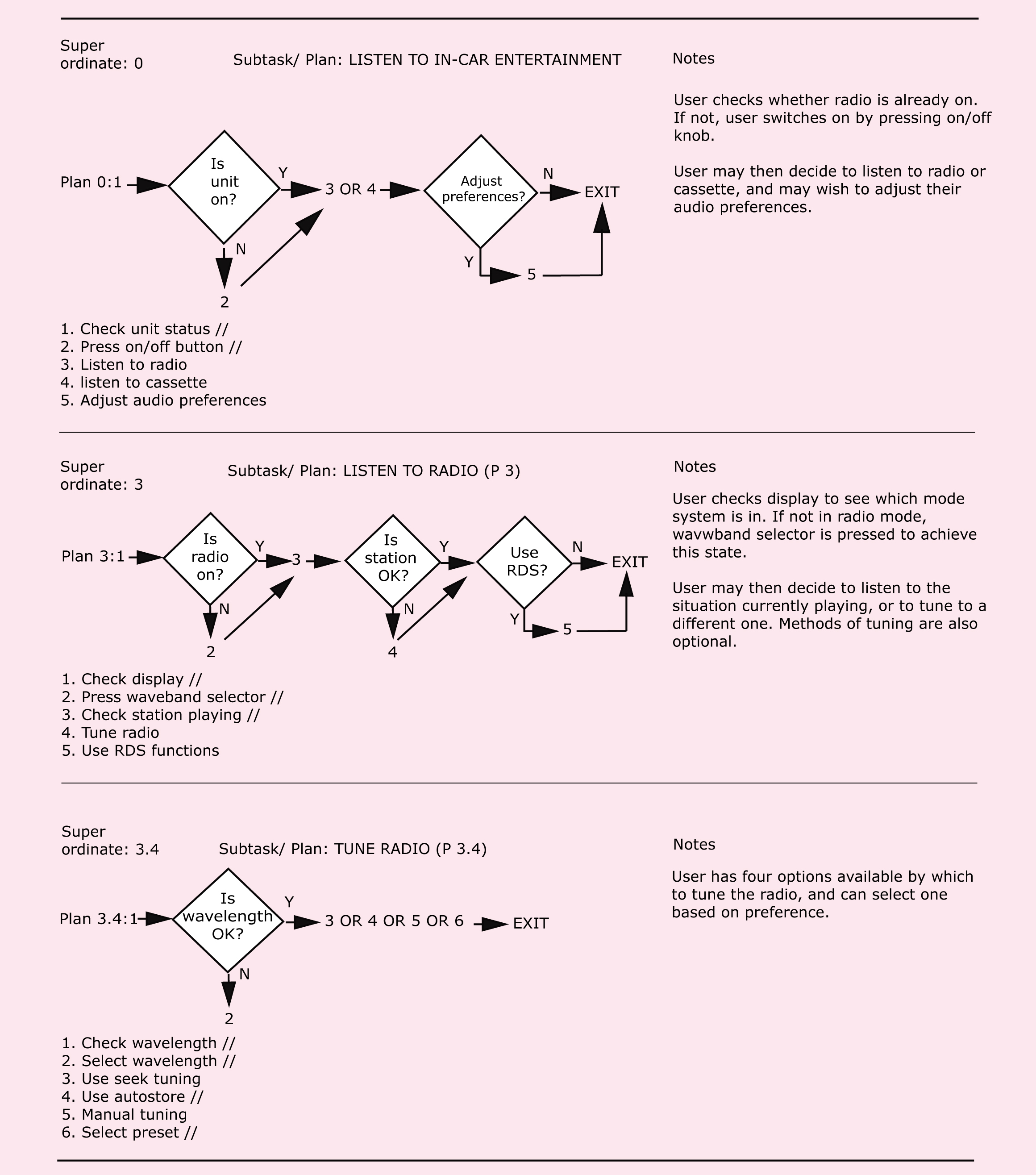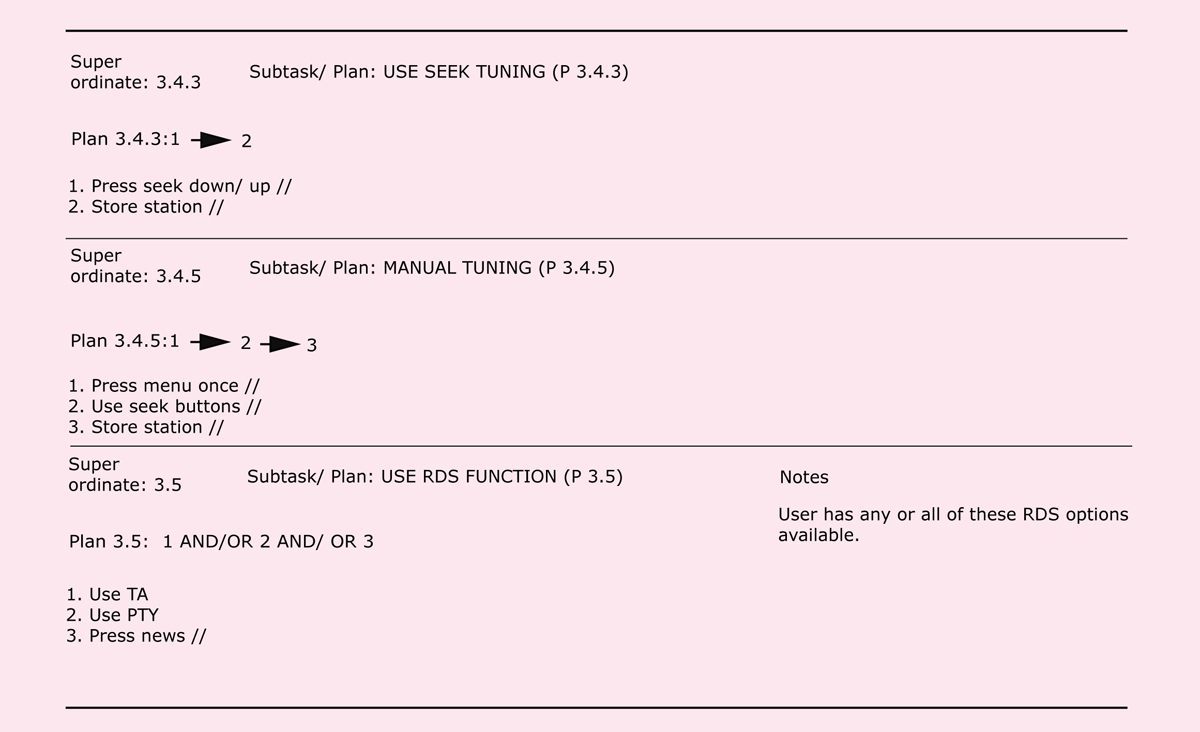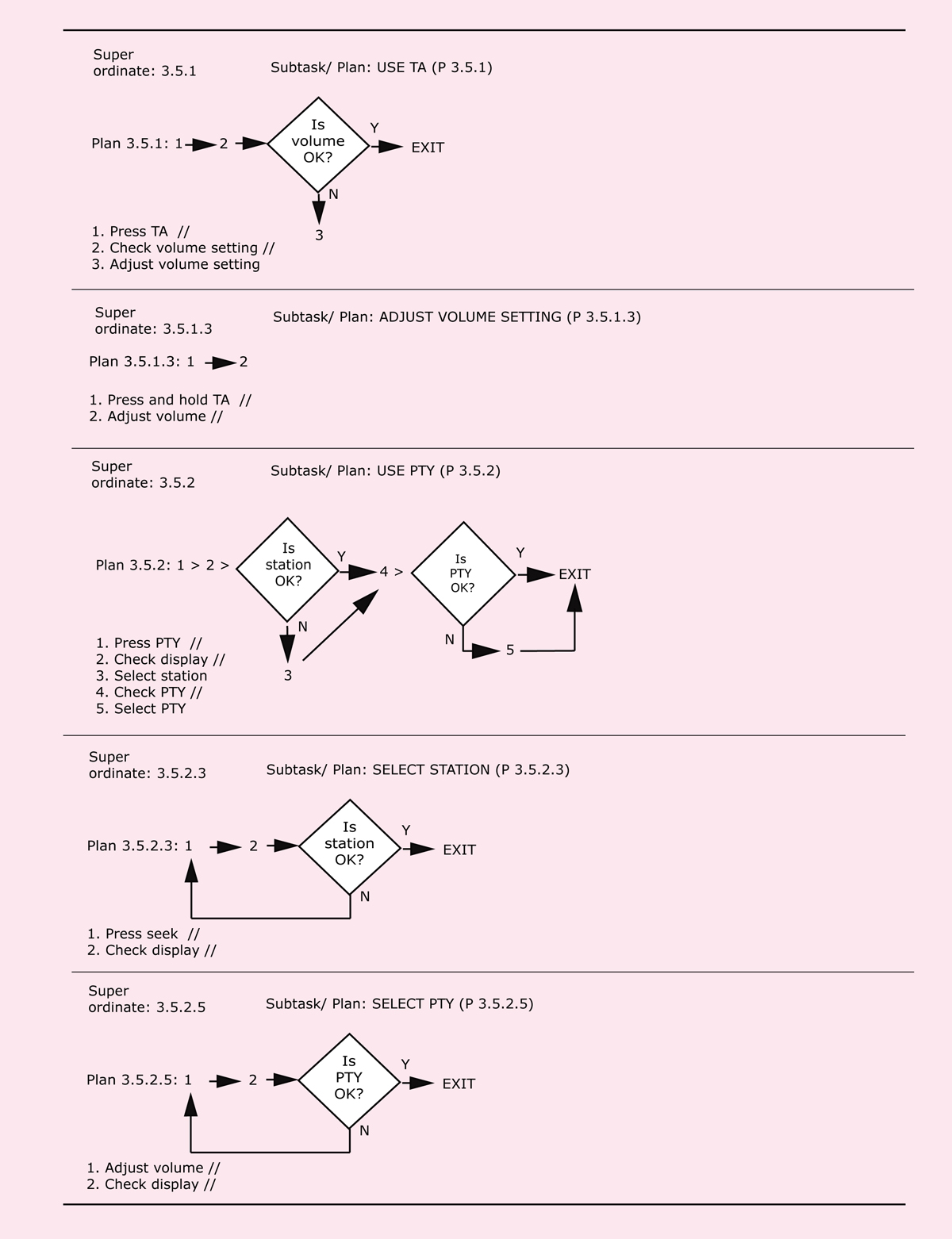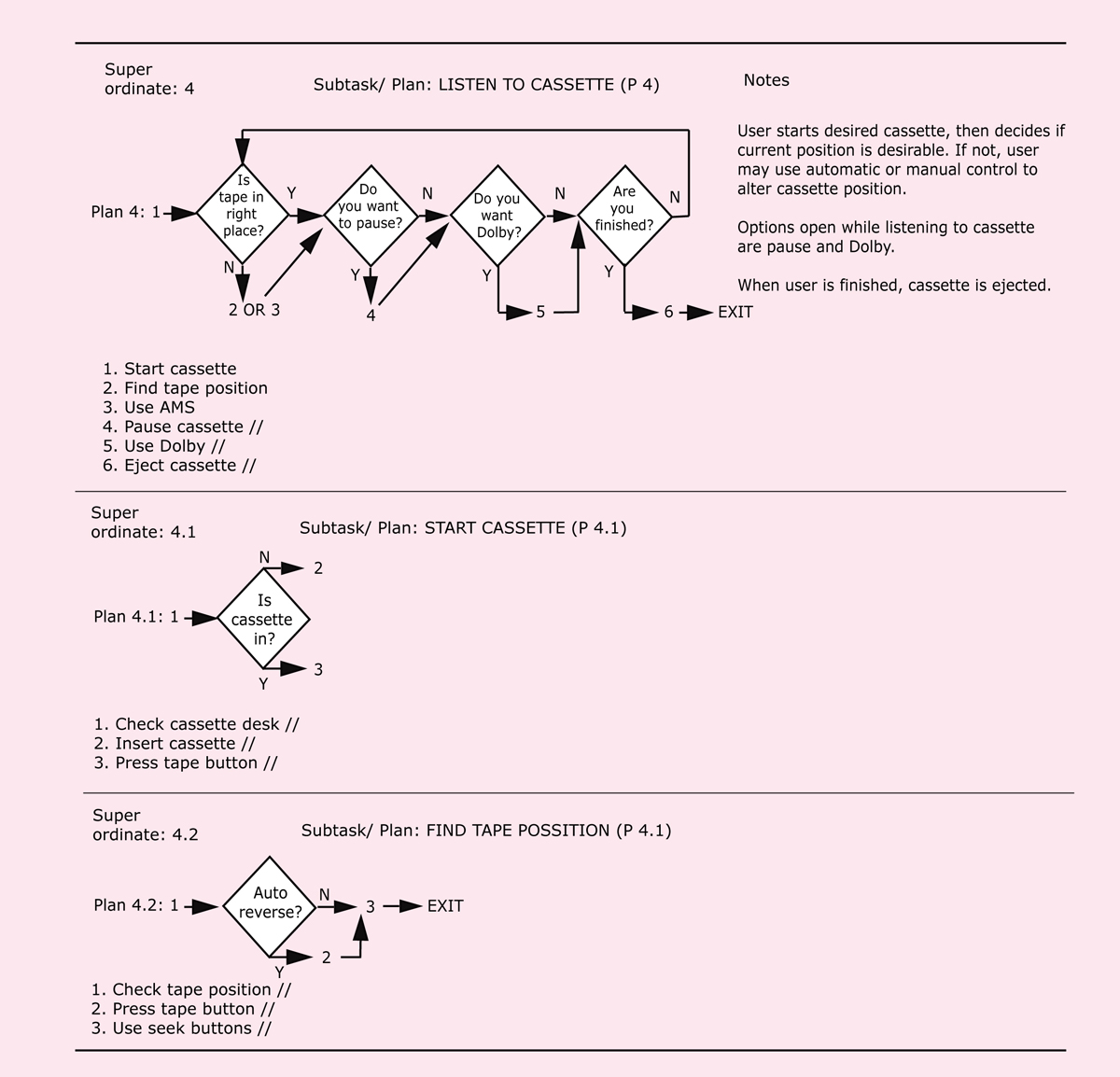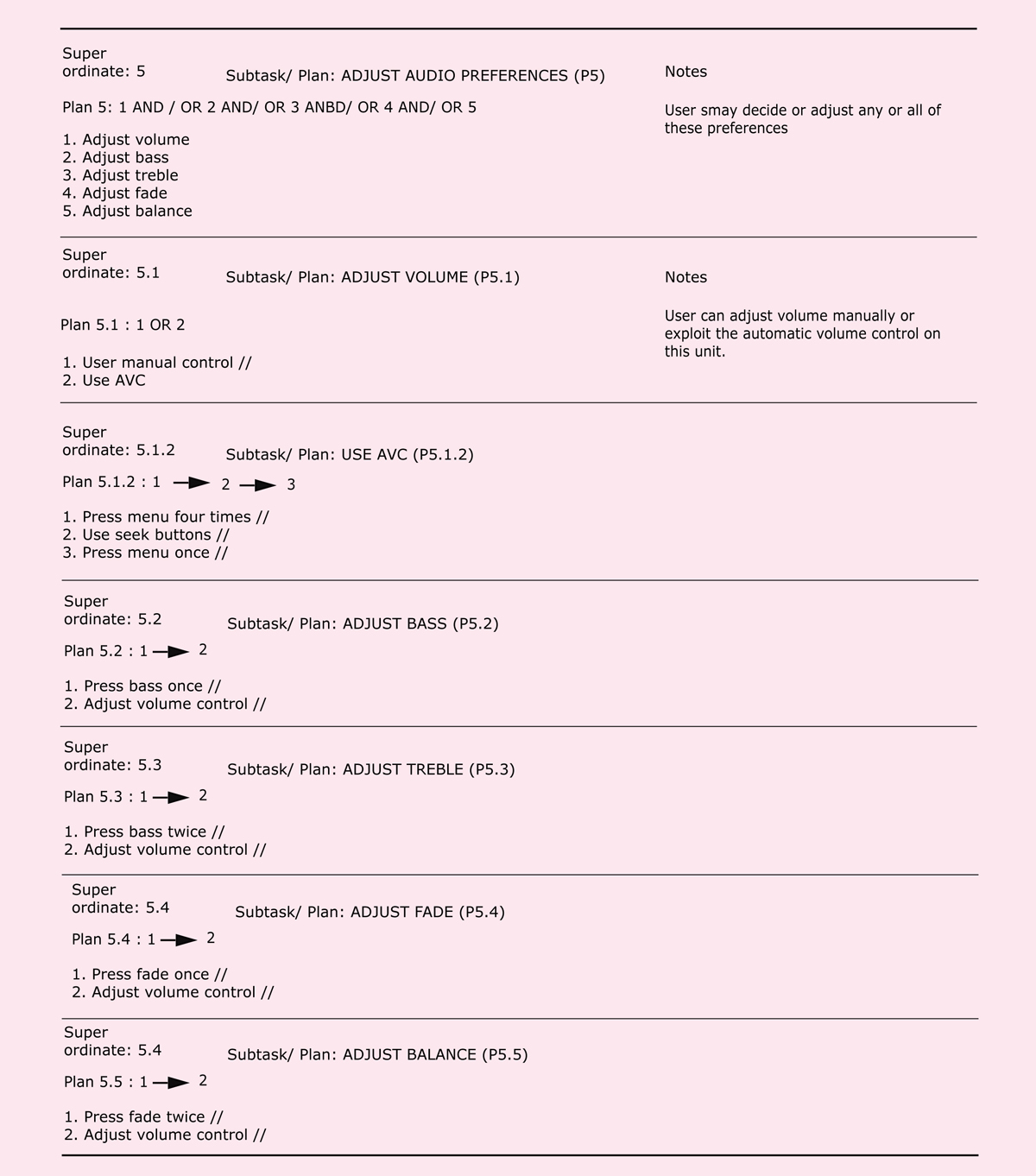- Before even defining the task statement, it is useful to specify the terminology which you are going to use. For instance, choose a few words to describe an action, then, it will be better to use these words (as appropriate) to describe all actions in the analysis.
- Specified overall goal which is top of the hierarchy. Break this goal down into four or five meaningful subgoals, which together make up the overall goal. Break these down further according to necessities up to an appropriate stopping point.
- To determine an appropriate stopping point, some people use a ‘p × c’ criterion in which ‘p’ is the probability of failure at that task and ‘c’ is the consequences of failure. Usually this is not involved in formal calculation; rather, it represents more of an informed judgment on the analyst’s part.
- The bottom level of any branch of the identified goals will usually be an operation. An operation actually says what should be done. Operations are therefore actions to be made by the operator.
- Once all the subgoals have been fully defined, the plans should be added. Plans are the ‘glue’ which command how the goals are accomplished, and are depending on current conditions in the environment. For example, a simple plan may say, Do ‘Step -1’ then ‘Step – 2’ and then ‘Step – 3’. And once the plan is ready, the actor may return to the superordinate level. Plans are not necessarily linear, and it may be useful to apply boolean logic to them, for instance, Do 1 OR 2 AND 3. Parentheses may be useful to indicate priority.
- A complete diagram of goals, subgoals, operations and plans should be made to prepare a HTA. This can be either tabulated or may employ any alternative representation format.
An example of HTA is given here in the context of listing of music in the car for entertainment. Table 8 will be helpful for understanding and preparation of a HTA.
Table 8. HTA of Ford radio use: tabular format (Adopted from Stanton and Young, 2003)
